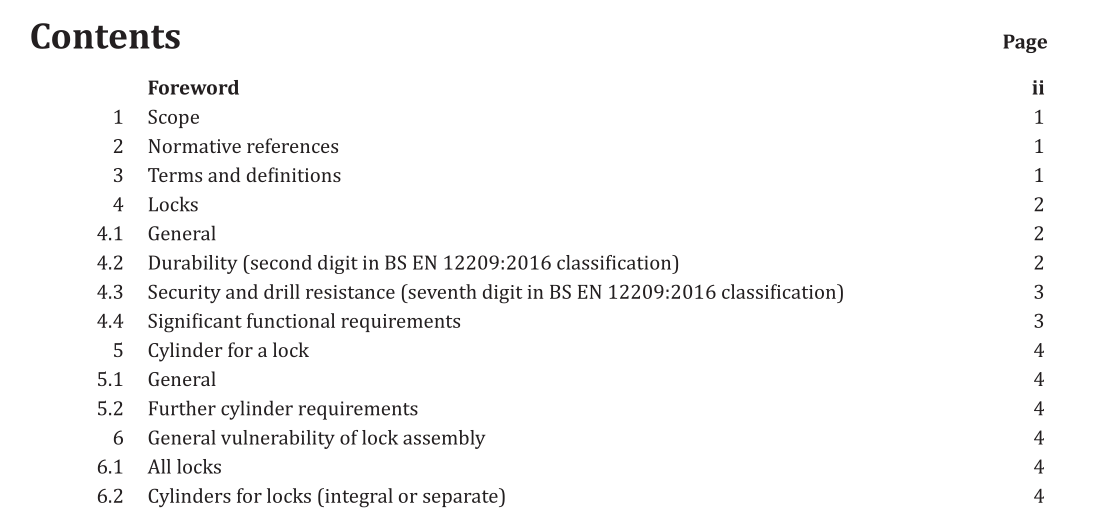BS 10621:2017 pdf download.Lock assemblies in which the operating mode can be switched between the normal BS 8621 operating mode and a secure mode in which no egress is possible
1 Scope
This British Standard specifies performance requirements and test methods for a thief-resistant mechanically operated single-point lock assembly (including locking plates, fixing screws, fitting instructions, cylinders and protective furniture, where appropriate] that: a) incorporates a lock conforming to BS EN 12209:2016 that, under normal conditions, can be unlocked from the inside without the use of a key, thereby allowing keyless egress; b} can be changed to a secure (no egress) mode by a secondary positive locking action; and c is used in doors, window doors and entrance doors in buildings. This standard covers only those thief-resistant lock assemblies that are intended for use in dwellings where there is an alternative escape route. It does not cover thief-resistant lock assemblies that provide keyless egress at all times since these are covered by BS 8621, nor does it cover thief- resistant lock assemblies that require the use of a removable key for egress since these are covered by BS 3621. NOTE It is possible that lock assemblies conforming to this standard might not be suitable for use on doors constructed from certain types of material, e.g. plastic or aluminium. See Clause 2 which specifies the information to be provided on the marking on the packaging of the lock assembly.
The assessment shall be undertaken by a panel of three expert assessors qualified in accordance with Annex B. Each expert shall undertake an individual assessment and report back independently. Each member of the panel shall report the test sample as having satisfactorily withstood the test, or (for A.6) where a suitable test key cannot be manufactured due to the design of the product, each expert shall confirm that the product is not vulnerable to the attack method described in this annex. NOTE The test is intended to assess the general vulnerability of a lock to an attack using knowledge, skill and professional ability. It is not intended to assess the lock’s ability to resist attack involving significant force or by the use of tools only available to locksmiths. Where an individual lock has more than one locking mechanism, all mechanisms accessible and operable from the outside face of the door shall be subject to assessment.
BS 10621:2017 pdf download
